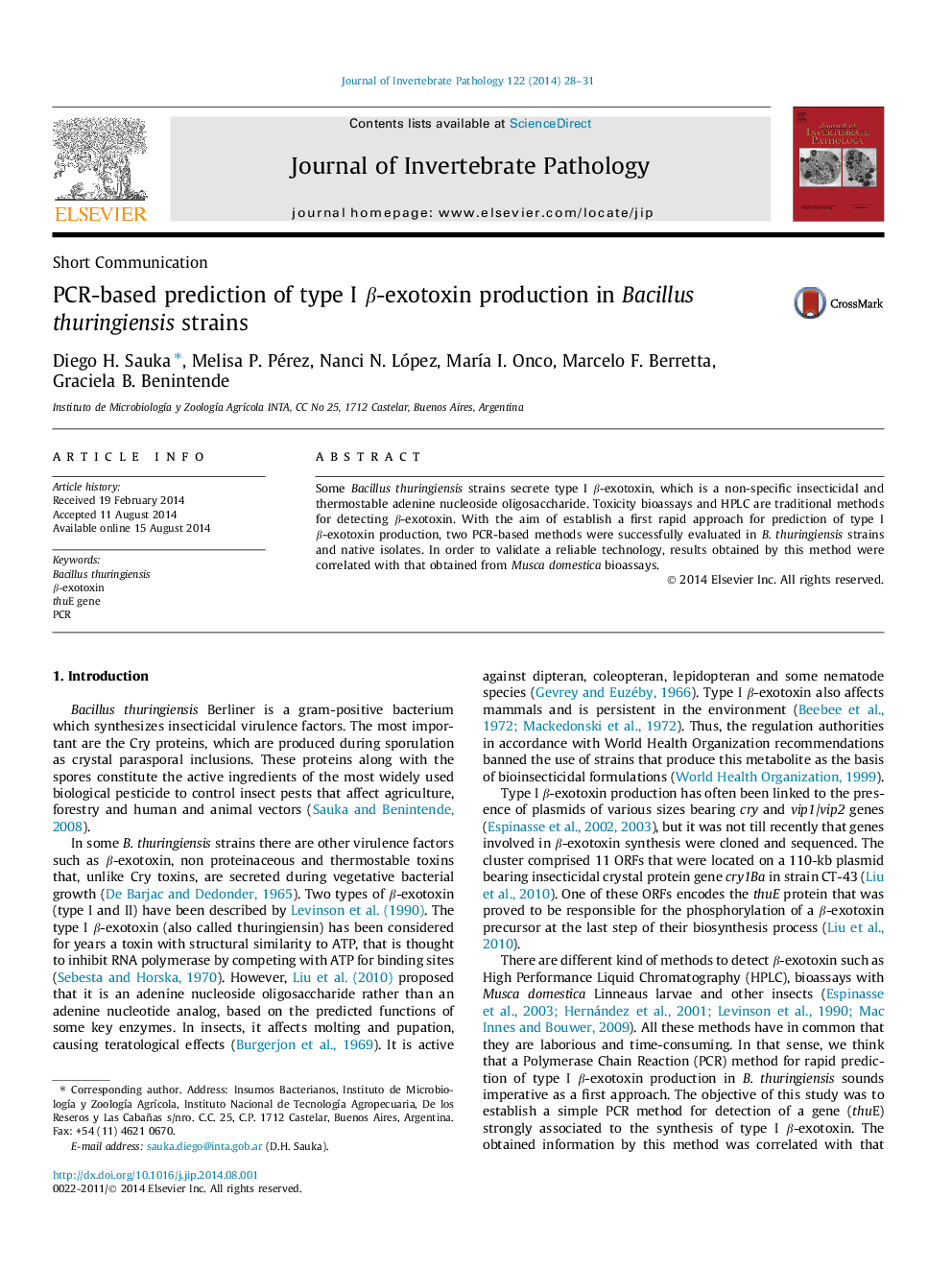| Article ID | Journal | Published Year | Pages | File Type |
|---|---|---|---|---|
| 6389450 | Journal of Invertebrate Pathology | 2014 | 4 Pages |
â¢A PCR-based method for detection of the thuE gene was established.â¢Specific primers produced amplification in 13.3% (4/30) of the exotic strains.â¢Specific primers produced amplification in 3.7% (4/107) of the native isolates.â¢Positive strains by PCR were also β-exotoxin producers.â¢Type II β-exotoxin producing strains are not predicted by this methodology.
Some Bacillus thuringiensis strains secrete type I β-exotoxin, which is a non-specific insecticidal and thermostable adenine nucleoside oligosaccharide. Toxicity bioassays and HPLC are traditional methods for detecting β-exotoxin. With the aim of establish a first rapid approach for prediction of type I β-exotoxin production, two PCR-based methods were successfully evaluated in B. thuringiensis strains and native isolates. In order to validate a reliable technology, results obtained by this method were correlated with that obtained from Musca domestica bioassays.
Graphical abstractDownload full-size image
